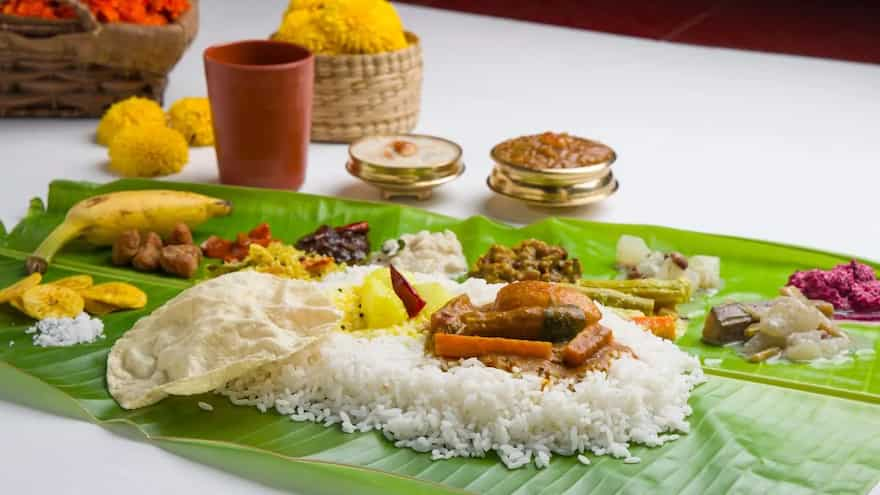Some festivals of the world have grown beyond the shackles of religion to become a time of community, joy and more often than not, food. Onam, Kerala’s harvest season festival is one of them. This week in Kerala and, more accurately, in Malayali homes worldwide, Onam is well underway. People are observing the 10-day rituals to honour the first harvest and the return of the great Asura King Mahabali (or Mahaveli) to his people to his beloved state of Kerala.
The occasion is marked by many traditions such as the gradual building of the Pookalam, a flower design made to welcome Mahabali’s good wishes into peoples’ homes. People also don new clothes to mark the occasion and of course, there’s the grand Onasadhya, a feast served on a banana leaf that’s more than just a meal, it’s a spiritual celebration.
The sadhya holds immense significance for Malayalees, exemplified by the old Malayalam adage, "Kaanam Vittum Onam Unnanam," meaning one should not forego the Onam feast, even if it means selling their possessions. But despite the concept of the sadhya being integral to all regions of the state there is little homogeneity to how it is prepared.
Over the last century, the sadhya has evolved in many ways and once an Onam sadhya would have less than ten dishes, today the standard is 26 with some places serving up to 64 dishes in a sitting. These grander feasts are usually reserved for restaurants or larger events where there is enough manpower to cater to the requirements, but even for family meals, Onam sadhya is now seen as incomplete without things like banana chips, pappads, a variety of pickles, sambar, rasam, pullisery, pachadi, thorans, upperi, diverse payasams and more.

In the southern and central districts of Kerala, people tend to adhere to a vegetarian sadhya with all the dishes geared towards local and seasonal produce. However in the northern parts of the state, across the area of Northern Malabar, you’ll often find some meat dishes finding their way onto the sadhya platter.
It’s not uncommon for people to have non-vegetarian food alongside a sadhya but it’s rarely counted as a part of the meal itself. Food anthropologist and food writer Oneal Sabu explains that many homes set aside a sadhya as an offering to the gods and family ancestors, and as meat is never used as a religious offering, the sadhya slowly became labelled a vegetarian affair. “But there’s no hard and fast rule,” he says, “there’s no question about it being ‘disrespectful’ to have meat on a sadhya. At the same time, it is a very North Malabar thing, and probably not what you’d call ‘traditional’.”
But the question of ‘traditional’ in connection with the Onam sadhya is a diverse topic in itself. It was originally a meal dictated by geography, occupation, economic status and accessibility over religious or social mandates. Over time, casteism became interwoven into the narrative of Onam but many aspects that we assume to be an integral part of the sadhya are non-native. Be it the sambar brought from Tamil Brahmin cooks to the state. Meals were served to people based on their caste and items like pappadams were reserved for the wealthy. “It’s also a festival of Brahmanical colonisation in Kerala.” says Sabu, “There’s no touch of divinity attached to Onam, it’s a regional festival. Regardless of your religion, it’s about having a good feast at home.”
While the debate rages about whether meat belongs on a sadhya or not, for some, it’s impossible to imagine one without it. For Sneha John, her mum’s beef fry is a must-have alongside the meal, while for Evin Pravin whose mother is Muslim and father is Brahmin, it can vary, but seafood and red meat often make an appearance. There are no specific dishes, it just comes down to the meals that bring a family together.
If anything, the differences are reflective of Kerala’s diverse soul. No matter what food finds inclusion on the sadhya platter, the core intent of the festival remains unchanged as a time to be with loved ones celebrating life’s bounties and feasting on food that makes your home a happy one.


